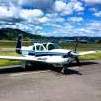-
Posts
5,838 -
Joined
-
Last visited
-
Days Won
29

Ragsf15e replied to 201er's topic in General Mooney Talk

Ragsf15e replied to 201er's topic in General Mooney Talk

Ragsf15e replied to BlueSky247's topic in General Mooney Talk

Ragsf15e replied to Matthew P's topic in Vintage Mooneys (pre-J models)

Ragsf15e replied to JohnB's topic in General Mooney Talk
We have placed cookies on your device to help make this website better. You can adjust your cookie settings, otherwise we'll assume you're okay to continue.